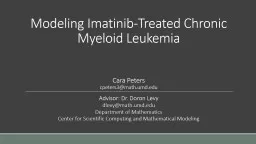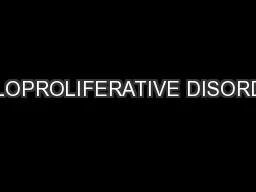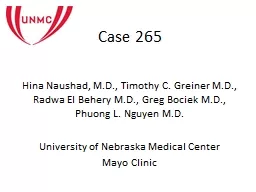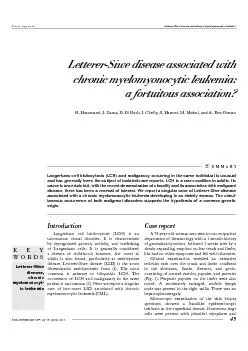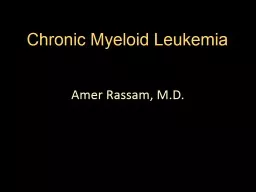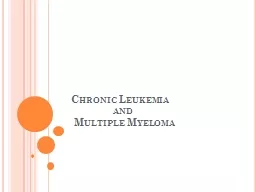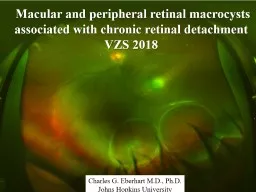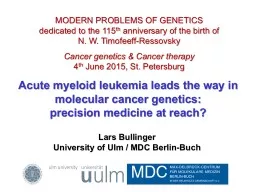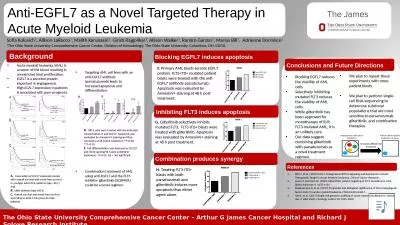PPT-Modeling Imatinib-Treated Chronic Myeloid Leukemia
Author : phoebe-click | Published Date : 2017-08-25
Cara Peters cpeters3mathumdedu Advisor Dr Doron Levy dlevymathumdedu Department of Mathematics Center for Scientific Computing and Mathematical Modeling Introduction
Presentation Embed Code
Download Presentation
Download Presentation The PPT/PDF document "Modeling Imatinib-Treated Chronic Myeloi..." is the property of its rightful owner. Permission is granted to download and print the materials on this website for personal, non-commercial use only, and to display it on your personal computer provided you do not modify the materials and that you retain all copyright notices contained in the materials. By downloading content from our website, you accept the terms of this agreement.
Modeling Imatinib-Treated Chronic Myeloid Leukemia: Transcript
Download Rules Of Document
"Modeling Imatinib-Treated Chronic Myeloid Leukemia"The content belongs to its owner. You may download and print it for personal use, without modification, and keep all copyright notices. By downloading, you agree to these terms.
Related Documents

